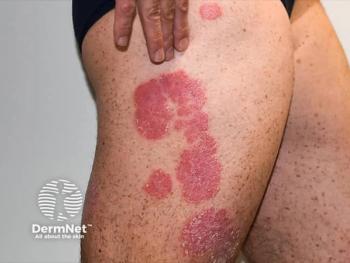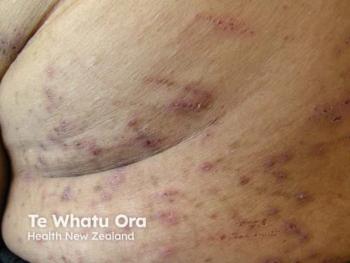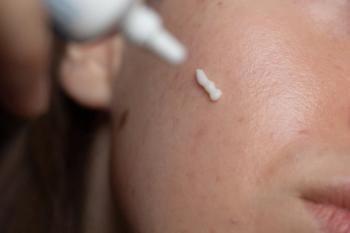
What to Know When Targeting IL-13 vs IL-31 in Atopic Dermatitis
Key Takeaways
- IL-13 is crucial in AD's immune dysregulation and barrier dysfunction, making it a key therapeutic target.
- IL-31 modulates itch signaling and has broader anti-inflammatory roles, contributing to neuroimmune loops in AD.
Raj Chovatiya, MD, PhD, MSCI, discusses how IL-13 and IL-31 inhibitors represent distinct yet complementary mechanisms in the management of atopic dermatitis.
“With atopic dermatitis, it's often a chicken or egg scenario. It's hard to pull out one molecule in isolation versus another, trying to say that this is maybe what came first, or that one came first, too. I like to tell my patients that either way we go, we're going to have an approved therapeutic option for your disease that's going to give you a shot at getting itch relief and skin improvement,” said Raj Chovatiya, MD, PhD, MSCI, in an interview with Dermatology Times.
Chovatiya, a board-certified dermatologist and clinical associate professor at the Rosalind Franklin University Chicago Medical School, founder and director of the Center for Medical Dermatology and Immunology Research in Chicago, and a Dermatology Times Editorial Advisory Board member, discussed the differences between IL-13 and IL-31 inhibitors for atopic dermatitis (AD). Despite the numeric similarity in their names, IL-13 and IL-31 are fundamentally distinct cytokines with different roles in the pathophysiology of AD.
According to Chovatiya, IL-13 is a cytokine consistently upregulated in the peripheral immune responses of AD patients. It plays a central role in the immunologic dysregulation and acquired barrier dysfunction that characterize the disease. Produced primarily by T cells, IL-13 modulates downstream inflammatory pathways and amplifies immune responses. Blocking IL-13 has demonstrated efficacy in improving both eczematous skin lesions and pruritus. Chovatiya emphasized that this pathway is a key driver of inflammation in AD, making it a rational and effective target for therapeutic intervention.
In contrast, IL-31, traditionally labeled the "itch cytokine," is now understood to have broader implications beyond pruritus. IL-31 acts as a direct neuronal modulator, essentially functioning as an on/off switch for itch signaling. Chovatiya noted that neurons in AD are not merely passive recipients of immune signaling but are active participants in the inflammatory process, contributing to neuroimmune loops that sustain disease activity. IL-31 also appears to have emerging roles in other cell types, potentially accounting for its broader anti-inflammatory effects observed with blockade.
Together, IL-13 and IL-31 inhibitors offer complementary approaches to AD therapy. While both pathways address itch and inflammation, they do so via distinct mechanisms: immune modulation for IL-13 and neuroimmune interruption for IL-31. Chovatiya highlighted the difficulty in teasing apart which pathway is more “causal” in individual patients due to the bidirectional nature of skin inflammation and itch in AD.
Clinically, the availability of both IL-13 and IL-31 inhibitors provides clinicians with a more nuanced toolkit to personalize treatment strategies. As Chovatiya advises patients, regardless of the initial choice of pathway, targeted inhibition of either cytokine offers a legitimate and effective path toward skin clearance and relief from pruritus.
To learn more about IL-13 vs IL-31 inhibitors from Chovatiya,
Newsletter
Like what you’re reading? Subscribe to Dermatology Times for weekly updates on therapies, innovations, and real-world practice tips.


















